The University of Bucharest is a public comprehensive university with a long history and a prestigious reputation in Romania. Here is a detailed introduction about it:
Introduction and Overview
School Name: The English name is University of Bucharest, and the Romanian name is Universitatea din București, abbreviated as UB.
Geographical Location: Located in Bucharest, the capital of Romania.
Student Size: In the 2022-2023 academic year, there are 32,576 students, including 22,428 undergraduates and 8,911 postgraduates.
Faculty: There are about 1,300 academic staff in 2022.
History
Origin: Its history can be traced back to 1694, when Constantine Brancuvinu established the Prince's College of Bucharest, where classes were taught in Greek.
Development: In 1776, Alexander Ypsilantis reformed the curriculum of the Prince's College and began to teach French, Italian and Latin. After 1821, the Prince's College was continued by the College of Saint Sava. In 1857, Carol Davila and Nicolae Cretulescu founded the National School of Medicine and Pharmacy, and in 1859 the Faculty of Law. On July 4, 1864, Prince Alexandru Ioan Cuza merged the Faculties of Law, Science and Literature into the University of Bucharest.
Later: In the late 19th and early 20th centuries, several faculties and institutes were established, including theology, geology, electro-technical, veterinary, and pharmacy. In the 20th century, it went through different stages of development and changes, including being called "C. I. Parhon University" in the 1950s and 1960s.
Establishment
Officially established on July 4, 1864.
School Strength
Complete range of disciplines: covering natural sciences, humanities, social sciences, theology and other fields, with 22 disciplines including philosophy, literature, law, history, economics, linguistics, psychology, educational science, political sociology, biochemistry, physics, mathematics, etc.
Rich degree awards: bachelor's degree, master's degree and doctoral degree can be awarded, with more than 100 disciplines for master's degree and 50 disciplines for doctoral degree.
Strong scientific research strength: It is one of the most important research centers in Romania, currently with more than 50 institutes, departments, research centers and 5 research platforms. Its research in chemistry, biology, physics, mathematics, law, linguistics and other disciplines has a high reputation at home and abroad, and many articles have been published in high-impact journals.
Institutional nature
It is a public, non-profit, non-political higher education institution.
Educational philosophy
With the mission of knowledge transfer, it is achieved through teaching, research and contribution to the development of Romanian society. Committed to providing the highest standards of educational services and research activities, focusing on international competitive challenges and internal continuous attention to quality, emphasizing interdisciplinary cooperation, and pursuing leadership and excellence in all activities and tasks of the academic community.
Key laboratories and disciplines
School of Biology: In the field of genetics, Lucian Gavrila is a famous geneticist in Romania; in the field of molecular biology, the Molecular Biology Center of the University of Bucharest, co-directed by Professors Marie Tacostache and Ancadi Nischiotu, focuses on biochemistry, cell and molecular pathology, biotechnology and bio-nanotechnology, and has advanced laboratories.
School of Chemistry: There are majors such as inorganic chemistry, physical chemistry, technical chemistry and catalysis, and analytical chemistry. Each major is led by well-known professors, such as Marius Andruh of inorganic chemistry and Dumitru Oancea of physical chemistry.
School of Physics: It has strong research strength and teaching teams in polymer physics, solid physics, nuclear physics, etc. Well-known professors include Emil Barna, Stefan Antohe, Alexandru Jipa, etc.
Faculty
It is divided into 19 schools and 5 departments, namely the School of Mathematics and Computer Science, the School of Business Administration, the Department of Biology, the Department of Chemistry, the School of Law, the School of Physics, the School of Geography, the School of History, the School of Geology and Geophysics, the School of Arts, the School of Journalism and Communication Studies, the Department of Foreign Languages and Literature, the Orthodox Theological Seminary, the Baptist Theological Seminary, the Department of Catholic Theology and Social Work, the Department of Philosophy, the School of Psychology and Educational Sciences, the School of Sociology and Social Work, the School of Political Science, the Department of Technology, the Department of Distance Learning, the UNESCO Department of Intercultural and Interreligious Communication, and the Department of Education.
Ranking
QS World University Rankings: 801-850 in 2025.
QS Emerging Europe and Central Asia Rankings: 67 in 2022.
U.S. News Best Global Universities Ranking: 1066th, 6th in Romania.
Expenses
Tuition fees for Romanian students are relatively low, generally ranging from a few hundred to a few thousand euros per year. For international students, tuition fees are usually around 2000-5000 euros per year, but may vary for different majors and degree levels. In addition, accommodation and living expenses need to be considered. Accommodation costs vary depending on the type of accommodation and region, generally between 150-400 euros per month, and living expenses are about 500-1000 euros per month.
Campus environment
Architectural style: The main building of the University of Bucharest has a historic architectural style. At the same time, there are some modern architectural facilities on campus, reflecting the fusion of tradition and modernity.
Learning facilities: The school has complete learning facilities such as libraries, laboratories, and computer centers, providing students with good learning conditions.
Living facilities: There are living facilities such as canteens and dormitories on campus, and there are also various shops, restaurants and entertainment venues around, which are convenient for students' daily life.
-

Grigore T. Popa University of Medicine and Pharmacy
-
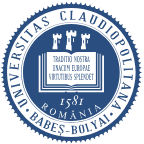
Babes-Bolyai University
-
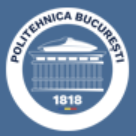
Politehnica University of Bucharest
-
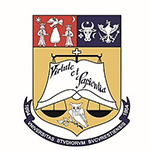
University of Bucharest
-
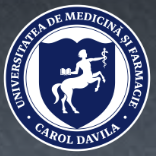
Carol Davila University of Medicine and Pharmacy
-
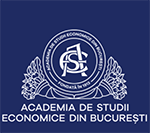
Bucharest Academy of Economic Studies
-

Technical University of Cluj-Napoca
-

1st December 1918 University of Alba Iulia
-

West University of Timisoara
-
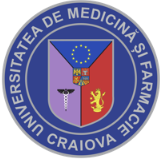
University of Medicine and Pharmacy of Craiova
-

Mesoamerican University
-

Istmo University
-

Mariano Galvez University of Guatemala
-

Regional University of Guatemala
-

Galileo University
-

Francisco Marroquín University
-

Rafael Landívar University
-

University of the Valley of Guatemala
-

University of San Carlos of Guatemala
-

Technological Institute of Tlaxcala Plateau
-

Golfo University
-

Technological University of South Sonora
-

Technological University of Huejotzingo
-

Tizimín Institute of Technology
-

Chilpancingo Institute of Technology
